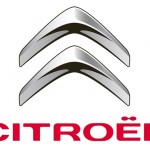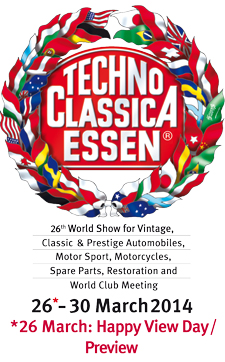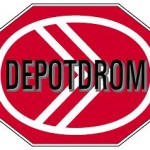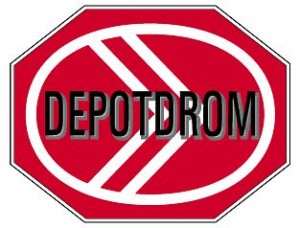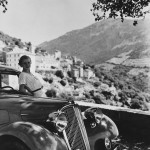
(English below, en Francais au-dessous)
In einer einzigartigen Reihe lässt die Marke Citroën ihre 100-jährige Modellgeschichte Revue passieren. Auf den Typ A 10 HP (1919), den 5 HP (1922) und die „Rosalie“ (1932) folgt nun der Traction Avant. Am 18. April 1934 wurde mit dem 7A das erste Modell der Citroën Traction Avant-Reihe vorgestellt. Seine Konstruktion versetzte die Fachwelt in Erstaunen, da Citroën als einer der Vorreiter in Europa erstmalig den Frontantrieb in der Großserienproduktion einsetzte. Damit zählt der Traction Avant zu den Wegbereitern des modernen Automobils. Ein Teil der Geschichte des Citroën Traction Avant ist eng mit der Stadt Köln verbunden: So startete 1934 die Produktion des Typ „Front“, der deutschen Variante des Traction Avant, im Werk Köln-Poll.
Der Traction Avant war eine technische Revolution und ein Meilenstein in der Automobilgeschichte. Dabei war der innovative Vorderradantrieb, der dem Modell seinen Namen gab, nicht die einzige Überraschung. Von den meisten Wettbewerbern jener Zeit unterschied sich der Citroën Traction Avant durch seine selbsttragende, aerodynamische Ganzstahlkarosserie. Ingenieur André Lefèbvre und Designer Flaminio Bertoni hatten eine wohldurchdachte Form mit einem einteiligen Kabinenaufbau und einer ausgewogenen Gewichtsverteilung entwickelt, die in erster Linie durch den deutlich niedrigeren Schwerpunkt, die breite Spur, den langen Radstand sowie den Einbau des Getriebes vor Motor und Vorderachse erzielt wurde.
Zudem war der Traction Avant für seine herausragende Straßenlage und seinen ausgezeichneten Komfort bekannt. Dabei reduzierte der schwimmend gelagerte Motor die Übertragung von Vibrationen in den Fahrzeuginnenraum. Auch die starre Hinterachse, die an zwei Längslenkern mit Torsionsstabfedern geführt wurde, trug wesentlich zu einem hohen Fahrkomfort bei.
Nicht weniger Aufsehen erzielten weitere Neuerungen wie beispielsweise die hydraulischen Bremsen, die Einzelradaufhängung vorn oder die erstmals 1936 eingebaute Zahnstangenlenkung. Ebenso gut kamen durchdachte Details an: Die Frontscheibe des Traction Avant konnte unten leicht ausgestellt werden, um den Innenraum bei wärmeren Außentemperaturen zu belüften. Im Winter konnte vor den Kühlergrill eine Jalousie montiert werden, damit der Motor schneller seine Betriebstemperatur erreichte.
Der „schwebende“ Vierzylinder-Motor verfügte über obenliegende Ventile, die über Kipphebel aus Schleuderguss betätigt wurden, und über nasse, herausnehmbare und damit wartungsfreundliche Zylinderlaufbuchsen. Der 32 PS starke Motor mit einem Hubraum von 1.303 cm3 war mit einem Drei-Gang-Getriebe ausgestattet und hatte einen Verbrauch von 9 l/100 km. Die maximale Geschwindigkeit betrug 95 km/h.
Beworben wurde das Modell der oberen Mittelklasse unter anderem mit „La Traction Avant dompte la force centrifuge“ – „Der Traction Avant zähmt die Zentrifugalkräfte“.
Der 1934 präsentierte erste Typ 7A wurde binnen weniger Monate abgelöst durch die stärker motorisierten Typen 7B und 7C; der Typ 7S („Sport“) wurde zum 11A und 11B weiterentwickelt. Diese wurden später umgangssprachlich als „7CV“ und „11CV“ bekannt, benannt nach ihren französischen Steuerklassen. Alternativ zur klassischen Limousine (als kleineres Modell „Légère“ neben dem „Normale“) entstanden auch Cabriolet, Commerciale, Familiale und Faux Cabriolet (Coupé).
Neben den legendären Achtzylinder-Prototypen von 1934 („22CV“), die nie in Serie produziert wurden und deren Verbleib ein Mythos ist, wurden die ab 1938 gefertigten 15-Six („15CV“) mit 2,8 Liter-Reihen-Sechszylinder zum Synonym für komfortables Reisen. Technischer Höhepunkt war 1954 das Modell 15-Six H mit hydropneumatisch gefederter Hinterachse als Vorgänger der legendären DS.
Aufgrund seiner hervorragenden Fahreigenschaften wurde der Traction Avant im Volksmund auch „Gangster-Limousine“ genannt. Mit seinem niedrigen Schwerpunkt, der breiten Spur und dem langen Radstand eignete er sich der Legende nach als ideales Fluchtfahrzeug − was er auch in vielen zeitgenössischen Filmen und Krimis unter Beweis stellte.
Vom Citroën Traction Avant wurden zwischen 1934 und 1957 insgesamt 759.123 Fahrzeuge produziert.
Typ „Front“ in Köln
Zwischen 1934 und 1935 wurde der Typ „Front“, die deutsche Variante des Citroën Traction Avant, im Werk in Köln-Poll gefertigt. Insgesamt wurden 1.031 Einheiten des 7CV sowie 800 Einheiten des 11CV produziert. Aufgrund seiner kölschen Herkunft wurde der Typ „Front“ in Deutschland auch zeitweise als „der Poller“ bezeichnet.
Heute ein Mythos, hat der Traction Avant den Weg zum modernen Automobil bereitet. In Deutschland sind Sammler und Liebhaber des Modells vorrangig im „Citroën Veteranen Club von Deutschland e.V.“ (www.cvc-club.de), „Traction Avant!“ (www.tractionavant.de) und „Traction Avant IG“ (www.tavig.de) organisiert.
Kontakt:
CITROËN DEUTSCHLAND GmbH
Presse und Öffentlichkeitsarbeit
Susanne Beyreuther
Telefon: 02203/ 2972-1412
E-Mail: susanne.beyreuther@citroen.com
—–
In a unique series, the Citroën brand reviews its 100-year model history. The type A 10 HP (1919), the 5 HP (1922) and the “Rosalie” (1932) are now followed by the Traction Avant. On 18 April 1934, the first model in the Citroën Traction Avant series, the 7A, was introduced. Its design astonished the experts, as Citroën, as one of the pioneers in Europe, used the front-wheel drive for the first time in mass production. This makes the Traction Avant one of the pioneers of the modern automobile. Part of the history of the Citroën Traction Avant is closely linked to the city of Cologne: In 1934, production of the “Front” type, the German version of the Traction Avant, began at the Cologne-Poll plant.
The Traction Avant was a technical revolution and a milestone in automotive history. The innovative front-wheel drive that gave the model its name was not the only surprise. The Citroën Traction Avant differed from most of its competitors of the time by its self-supporting, aerodynamic all-steel body. Engineer André Lefèbvre and designer Flaminio Bertoni had developed a well thought-out shape with a one-piece cabin construction and a balanced weight distribution, which was primarily achieved by the significantly lower centre of gravity, the wide track, the long wheelbase and the installation of the transmission in front of the engine and front axle.
The Traction Avant was also known for its excellent road holding and comfort. The floating engine reduced the transmission of vibrations to the vehicle interior. The rigid rear axle, which was guided by two trailing arms with torsion bar springs, also made a significant contribution to driving comfort.
Other innovations such as the hydraulic brakes, the independent front wheel suspension and the rack-and-pinion steering system, which was installed for the first time in 1936, caused no less a stir. Well thought-out details were just as well received: The front windshield of the Traction Avant could be easily opened at the bottom to ventilate the interior in warmer outside temperatures. In winter, a blind could be mounted in front of the radiator grille to allow the engine to reach its operating temperature more quickly.
The “floating” four-cylinder engine had overhead valves operated by centrifugally cast rocker arms and wet, removable and thus maintenance-friendly cylinder liners. The 32 hp engine with a displacement of 1,303 cm3 was equipped with a three-speed gearbox and had a consumption of 9 l/100 km. The maximum speed was 95 km/h.
The model of the upper middle class was advertised among other things with “La Traction Avant dompte la force centrifuge” – “The Traction Avant tames the centrifugal forces”.
The first type 7A, presented in 1934, was replaced within a few months by the more powerful types 7B and 7C; the type 7S (“Sport”) was further developed into the 11A and 11B. These were later colloquially known as “7CV” and “11CV”, named after their French tax classes. As an alternative to the classic sedan (as a smaller model “Légère” next to the “Normale”) also Cabriolet, Commerciale, Familiale and Faux Cabriolet (Coupé) were developed.
In addition to the legendary 1934 eight-cylinder prototypes (“22CV”), which were never produced in series and the whereabouts of which are a myth, the 15-Six (“15CV”) with 2.8-litre six-cylinder in-line engines produced from 1938 onwards became synonymous with comfortable travelling. The technical highlight in 1954 was the 15-Six H model with hydropneumatically sprung rear axle, the predecessor of the legendary DS.
Due to its excellent driving characteristics, the Traction Avant was popularly known as the “Gangster Limousine”. With its low centre of gravity, wide track and long wheelbase, legend has it that it was the ideal escape vehicle – which it also proved in many contemporary films and crime thrillers.
The Citroën Traction Avant produced a total of 759,123 vehicles between 1934 and 1957.
Type “Front” in Cologne
Between 1934 and 1935 the type “Front”, the German version of the Citroën Traction Avant, was produced in the factory in Cologne-Poll. A total of 1,031 units of the 7CV and 800 units of the 11CV were produced. Due to its Cologne origin, the type “Front” was also temporarily called “the bollard” in Germany.
Today a myth, the Traction Avant has paved the way for the modern automobile. In Germany, collectors and lovers of the model are primarily in the “Citroën Veteranen Club von Deutschland e.V.” (www.cvc-club.de), “Traction Avant! (www.tractionavant.de) and “Traction Avant IG” (www.tavig.de).
Contact:
CITROËN GERMANY GmbH
Press and Public Relations
Susanne Beyreuther
phone: 02203/ 2972-1412
E-mail: susanne.beyreuther@citroen.com
—–
Dans une série unique, la marque Citroën passe en revue ses 100 ans d’histoire. Le Type A 10 HP (1919), la 5 HP (1922) et la “Rosalie” (1932) sont maintenant suivis par la Traction Avant. Le 18 avril 1934, le premier modèle de la série Citroën Traction Avant, le 7A, est présenté. Son design a étonné les experts, parce que Citroën, l’un des pionniers en Europe, a utilisé la propulsion à traction avant pour la première fois en grande série. Cela fait de la Traction Avant l’un des pionniers de l’automobile moderne. Une partie de l’histoire de la Citroën Traction Avant est étroitement liée à la ville de Cologne: En 1934, la production du type “Front”, version allemande de la Traction Avant, commença dans l’usine de Cologne-Poll.
La Traction Avant a été une révolution technique et un jalon dans l’histoire de l’automobile. La propulsion traction avant innovante qui a donné son nom au modèle n’a pas été la seule surprise. La Citroën Traction Avant se distingue de la plupart de ses concurrents de l’époque par sa carrosserie autoportante tout acier et aérodynamique. L’ingénieur André Lefèbvre et le designer Flaminio Bertoni avaient mis au point une forme bien pensée avec une cabine monobloc et une répartition équilibrée du poids, principalement grâce à un centre de gravité nettement plus bas, une voie large, un empattement long et l’installation de la transmission à l’avant du moteur et du pont avant.
La Traction Avant était également connue pour son excellente tenue de route et son confort. Le moteur flottant a réduit la transmission des vibrations à l’intérieur du véhicule. L’essieu arrière rigide, guidé par deux bras oscillants à ressorts à barre de torsion, a également contribué de manière significative au confort de conduite.
D’autres innovations telles que les freins hydrauliques, la suspension indépendante des roues avant et le système de direction à crémaillère, installé pour la première fois en 1936, n’ont pas moins fait sensation. Des détails bien pensés ont été tout aussi bien accueillis : Le pare-brise avant de la Traction Avant s’ouvre facilement par le bas pour ventiler l’habitacle en cas de températures extérieures plus chaudes. En hiver, un store peut être monté devant la grille du radiateur pour permettre au moteur d’atteindre plus rapidement sa température de fonctionnement.
Le moteur à quatre cylindres “flottant” était équipé de soupapes en tête actionnées par des culbuteurs moulés par centrifugation et de chemises de cylindres mouillées, amovibles et donc faciles à entretenir. Le moteur de 32 ch d’une cylindrée de 1 303 cm3 était équipé d’une boîte de vitesses à trois rapports et avait une consommation de 9 l/100 km. La vitesse maximale était de 95 km/h.
Le modèle de la classe moyenne supérieure a été annoncé entre autres avec “La Traction Avant dompte la force centrifuge”.
Le premier type 7A, présenté en 1934, a été remplacé en quelques mois par les plus puissants types 7B et 7C; le type 7S (“Sport”) a été développé en 11A et 11B. Plus tard, ils ont été communément appelés “7CV” et “11CV”, du nom de leurs classes d’imposition françaises. Comme alternative à la berline classique (comme modèle plus petit “Légère” à côté de la “Normale”), on a également développé Cabriolet, Commerciale, Familiale et Faux Cabriolet (Coupé).
Outre les légendaires prototypes à huit cylindres de 1934 (“22CV”), qui n’ont jamais été produits en série et dont l’emplacement est un mythe, le 15-Six (“15CV”) à six cylindres en ligne de 2,8 litres produit à partir de 1938 devient synonyme de voyage confortable. Le point culminant technique en 1954 fut le modèle 15-Six H à suspension hydropneumatique de l’essieu arrière, prédécesseur de la légendaire DS.
En raison de ses excellentes caractéristiques de conduite, la Traction Avant était populairement connue sous le nom de “Gangster Limousine”. Avec son centre de gravité bas, sa voie large et son empattement long, la légende dit que c’était le véhicule d’évasion idéal – ce qu’il a également prouvé dans de nombreux films et films policiers contemporains.
La Citroën Traction Avant a produit un total de 759 123 véhicules entre 1934 et 1957.
Type “Front” à Cologne >.
Entre 1934 et 1935, le type “Front”, la version allemande de la Citroën Traction Avant, fut produit dans l’usine de Cologne-Poll. Au total, 1 031 unités de la 7CV et 800 unités de la 11CV ont été produites. En raison de son origine de Cologne, le type “Front” a également été temporairement appelé “la borne” en Allemagne.
Aujourd’hui mythe, la Traction Avant a ouvert la voie à l’automobile moderne. En Allemagne, les collectionneurs et les amateurs du modèle se trouvent principalement dans le “Citroën Veteranen Club von Deutschland e.V.” (www.cvc-club.de), “Traction Avant!” (www.tractionavant.de) et “Traction Avant IG” (www.tavig.de).
Contact :
CITROËN Deutschland GmbH
Presse et relations publiques
Susanne Beyreuther
téléphone : 02203/ 2972-1412
Courriel : susanne.beyreuther@citroen.com





